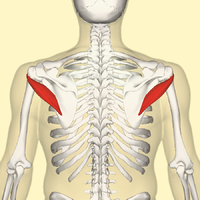
Photo from wikipedia
Background: Polyneuropathies (PNP) are a broad field of diseases affecting millions of people. While the symptoms presented are mostly similar, underlying causes are abundant. Thus, early identification of treatable causes… Click to show full abstract
Background: Polyneuropathies (PNP) are a broad field of diseases affecting millions of people. While the symptoms presented are mostly similar, underlying causes are abundant. Thus, early identification of treatable causes is often difficult. Besides clinical data and basic laboratory findings, nerve conduction studies are crucial for etiological classification, yet limited. Besides Magnetic Resonance Imaging (MRI), high-resolution nerve ultrasound (HRUS) has become a noninvasive, fast, economic and available tool to help distinguish different types of nerve alterations in neuropathies. Methods: We aim to describe typical ultrasound findings in PNP and patterns of morphological changes in hereditary, immune-mediated, diabetic, metabolic and neurodegenerative PNP. Literature research was performed in PubMed using the terms ‘nerve ultrasound’, neuromuscular ultrasound, high-resolution nerve ultrasound, peripheral nerves, nerve enlargement, demyelinating, hereditary, polyneuropathies, hypertrophy’. Results: Plenty of studies over the past 20 years investigated the value of nerve ultrasound in different neuropathies. Next to nerve enlargement, patterns of nerve enlargement, echointensity, vascularization and elastography have been evaluated for diagnostic terms. Furthermore, different scores have been developed to distinguish different etiologies of PNP. Conclusions: Where morphological alterations of the nerves reflect underlying pathologies, early nerve ultrasound might enable a timely start of available treatment and also facilitate follow up of therapy success.
Journal Title: Diagnostics
Year Published: 2021
Link to full text (if available)
Share on Social Media: Sign Up to like & get
recommendations!